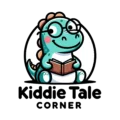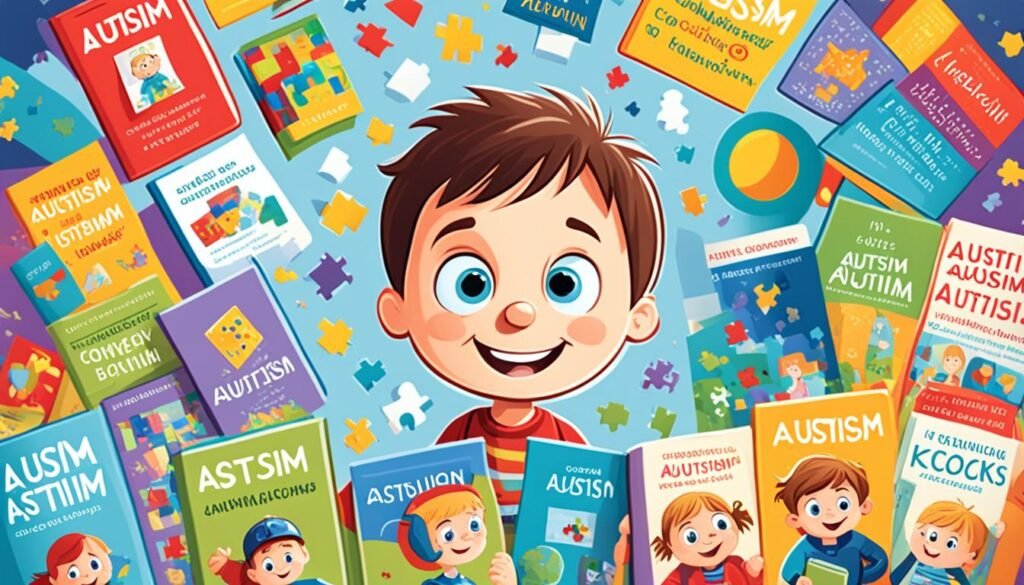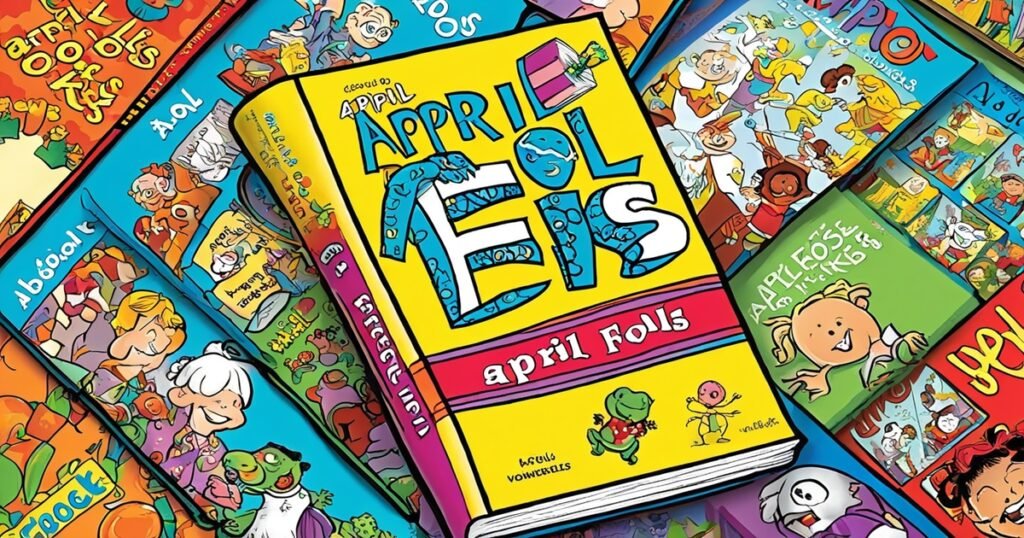With April marking Autism Awareness Month, educators and parents are on the lookout for autism books for kids that offer both an accurate and heartwarming portrayal of the autistic experience. The significance of children’s books about autism extends beyond mere storytelling; these narratives are pivotal in seeing the world through a much-needed lens of neurodiversity. The journey towards understanding and embracing the autistic community is enriched through educational resources, and educational books for kids with autism play a critical role in this transformative process.
Addressing the call for literature that dismantles stereotypes and champions acceptance, these books are not just educational tools but beacon lights guiding the path towards a society that values inclusion all year round. As we share these stories with our children, we don’t only entertain them—we enlighten futures full of empathy and understanding.
Table of Contents
- Key Takeaways
- Understanding Autism Through Children’s Literature
- Crafting an Autism-Friendly World with Educational Books
- Top Picture Books on Autism for Young Readers
- A Curated Collection of Autism Books for Kids
- Recommended Books on Autism for Kids and Classroom Use
- “My Brother Otto”: An Exploration of Non-verbal Communication
- Best Autism Books for Children: Highlighting Unique Perspectives
- The Importance of Autism Resources for Kids
- Autism Awareness Through the Eyes of Protagonists in Kids’ Books
- Source Links
Key Takeaways
- April’s Autism Awareness Month is a prime time for sharing autism books for kids with young readers.
- Curated lists of children’s books about autism can be powerful in normalizing neurodiversity.
- Educators and parents can use educational books for kids with autism to foster a culture of inclusion.
- Authentically represented characters help children see autism in a positive, relatable light.
- Selecting stories that accurately depict autism challenges stereotypes and encourages acceptance.
- Children’s literature serves as an essential stepping stone toward a world that celebrates differences.
Understanding Autism Through Children’s Literature
Delving into the world of autism through the pages of children’s literature serves as a bridge to greater awareness and empathy. These narratives open doors to new worlds that many readers may not encounter in their daily lives, allowing for a more nuanced understanding of neurodiversity and the experiences of those on the autism spectrum. As authors bring to life characters with diverse minds, they lay the groundwork for acceptance and inclusion in the hearts of their young audience.
The Role of Books in Fostering Acceptance and Inclusion
With the power to enlighten and educate, the best autism books for children are more than mere tales; they are vital tools that shape the perspectives of the next generation. These carefully chosen narratives illustrate the many facets of autism, encouraging young readers to understand and embrace the differences of their peers. When characters’ experiences resonate with children, the seeds of inclusion are planted, sprouting into a future where diversity is not simply acknowledged, but celebrated.
How Accurate Portrayals in Kids’ Books Counteract Stereotypes
Brandy Haberer, known for her advocacy within the autistic community, emphasizes the need for genuine representation in children’s literature. These accurate reflections shatter longstanding misconceptions, replacing them with relatable and educational content. Such authentic stories are not only recommended books on autism for kids, but are also vital autism resources for kids, paving the way towards a society where every child feels acknowledged and valued.
- Accurate depictions in books help children recognize and appreciate differences in others
- Stories about autism introduce neurodiversity to young readers in a relatable way
- Inclusive narratives in children’s literature contribute to a more accepting society
Crafting an Autism-Friendly World with Educational Books
Creating an inclusive environment for children with autism spectrum disorders (ASDs) requires more than just awareness—it necessitates the provision of educational tools that are both supportive and reflective of their experiences. One such indispensable resource comes in the form of educational books for kids with autism. These publications not only portray the manifold realities of living with autism but also empower children with the knowledge and strategies needed to navigate a world that may not always be tailored to their unique way of experiencing it.
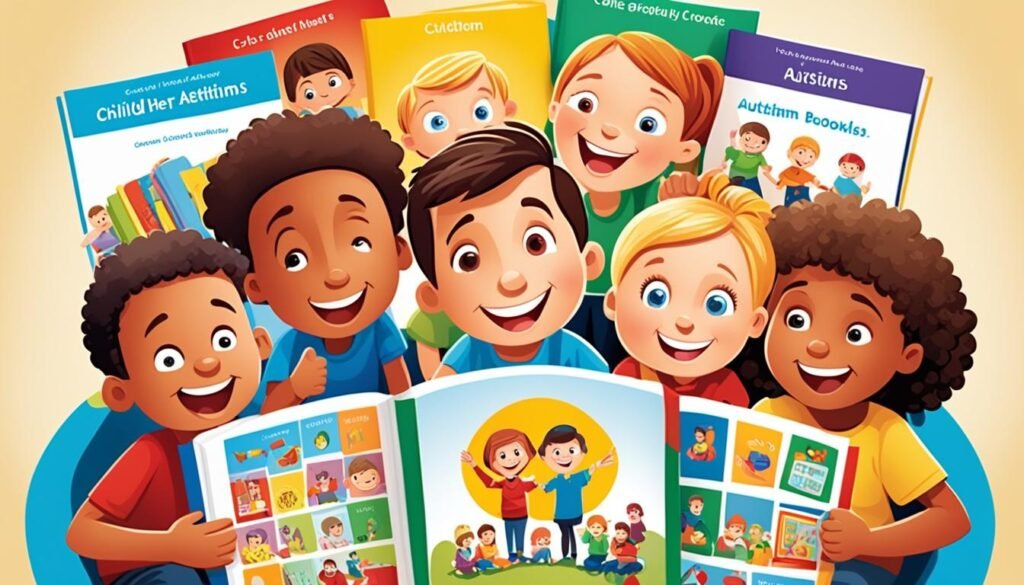
In recognition of their significant impact, books to help children with autism are structured to foster understanding and self-recognition. The narratives often integrate characters that readers with autism can identify with, providing a mirror to their own lives and signifying to them—and to others—that their stories are heard and respected. The power of seeing oneself within the pages of a book cannot be overstated, as it emboldens not only the children with ASDs but also educates their peers, families, and communities.
Educators and parents seeking resources to support their children’s journey need look no further than the robust selection of picture books on autism. These books are tailored to engage young minds with vivid illustrations and relatable situations. Through these stories, all children—regardless of neurological profiles—can learn the many ways their friends might experience sensory inputs, communicate desires, and interact with the world around them. Herein lies the opportunity to teach essential life skills, such as empathy, patience, and kindness.
- Books featuring autistic characters model for readers the diverse ways of processing and responding to the environment.
- Stories help demystify unique behaviors, such as stimming or non-verbal communication, normalizing them for other children.
- Interactive elements in books promote engagement, claiming the attention of learners and fostering a participatory understanding of autism.
The narrative fabric woven together by educational books for kids with autism goes beyond mere storytelling. These books act as bridges connecting the gaps in understanding, bearing the weight of misconceptions, and leading us to a world that acknowledges the full spectrum of human diversity. In this way, literature becomes more than an instrument of learning—it becomes an agent of change towards a more compassionate and autism-friendly society.
Top Picture Books on Autism for Young Readers
For parents and educators aiming to foster understanding in young minds, it is essential to offer stories that not only engage but also educate. Children’s books about autism proudly stand at the intersection of learning and empathy, guiding the next generation towards a kinder, more inclusive worldview. By highlighting the autism spectrum through compelling storytelling and vivid illustrations, these autism books for kids serve as both a reflection of reality for some and a window into empathy for others.
Interactive Stories for Engagement and Learning
The ability of interactive books to captivate children’s attention is unparalleled. Books like “My Brother Otto” and “Nope. Never. Not For Me!” offer tactile experiences that involve readers in a hands-on manner, making them active participants in the story. This method not only entertains but also immerses young readers into the daily lives of their autistic peers, teaching valuable lessons in understanding and accommodation.
Visual Narratives that Simplify Complex Emotions
Conveying the emotions and challenges faced by individuals with autism can be a complex task, but top books for kids with autism manage to distill these complexities into relatable visual narratives. Through the power of illustration, books like “This Beach is Loud!” depict the overwhelming nature of sensory overload with immediate clarity. The images act as visual cues for children to grasp the nuanced experiences of those with autism, fostering a bridge of empathy between them and their peers on the spectrum.
- Interactive stories engage children and encourage empathy through hands-on learning.
- Illustrations in autism books simplify the understanding of complex sensory issues.
- By simulating sensory experiences, children learn patience and acceptance.
These literary works do more than tell stories; they serve as a beacon, guiding children towards inclusivity and understanding. Making these books available to young readers is more than just a means of education—it’s a step towards building a society that embraces neurodiversity wholeheartedly.
A Curated Collection of Autism Books for Kids
Exploring the rich tapestry of neurodiversity, a carefully selected array of autism books for kids shines a spotlight on the varied experiences of individuals with autism. These stories serve as a powerful educational tool for children and adults alike, fostering a deeper understanding of the autistic experience. By choosing books that truthfully reflect this diversity, readers can gain insight into the challenges and triumphs associated with autism, enabling them to develop empathy and inclusiveness.
Stories That Reflect the Neurodiverse Spectrum
Children’s literature has the profound capacity to mirror the vast spectrum of human experiences, especially through the inclusion of characters with differing abilities. The Girl Who Thought In Pictures, which illustrates the inspiring life of Temple Grandin, is a prime example of a narrative that broadens the reader’s horizon, giving them a unique glimpse into an autistic mind. It’s through these empathetic portrayals that recommended books on autism for kids can act as a window into the world of neurodiversity, celebrating the distinct ways in which autistic individuals perceive their surroundings.
Books Authored by Individuals on the Autism Spectrum
Another dimension of authenticity in the realm of autism resources for kids is the inclusion of works created by authors who are on the autism spectrum themselves. Stories like The Reason I Jump allow readers to dive into the internal thoughts and emotions of a thirteen-year-old autistic boy, offering a narrative that can only be articulated by someone with firsthand experience. Such books are highly regarded as the best autism books for children, providing a valid and genuine reflection of life with autism, and validating the voices and feelings of those who navigate this journey daily.
Through reading, children and adults alike can step into the shoes of someone else’s world, fostering compassion and understanding. To enhance this mission, here is a table highlighting key features of the notable books from our curated collection:
| Book Title | Target Age Group | Central Theme | Authorship |
|---|---|---|---|
| The Girl Who Thought In Pictures | 4-8 years | Biography/Temple Grandin’s life | Julia Finley Mosca |
| The Reason I Jump | 8-12 years | Autobiography/Internal Autism Perspective | Naoki Higashida |
In these volumes, not only is a world illuminated for those unfamiliar with autism, but also a narrative is given to those who live it. Each book serves its purpose in the grander aim of fostering a culture of acceptance and support for the autistic community.
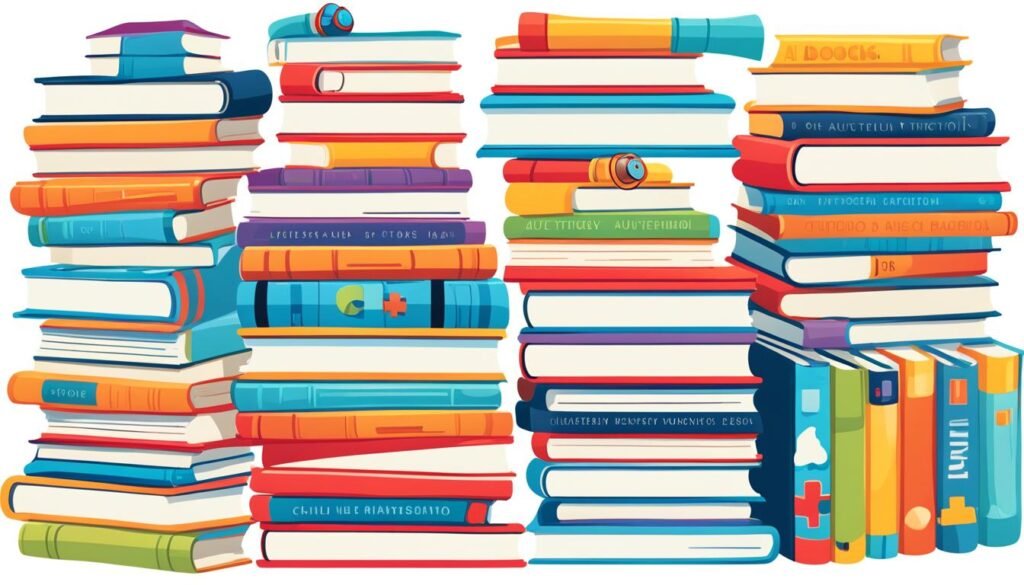
Recommended Books on Autism for Kids and Classroom Use
The incorporation of autism books for kids within the educational sphere transcends traditional learning and fosters an environment rich in empathy and understanding. Schools looking to create a welcoming atmosphere for all students can utilize top books for kids with autism as a resource for promoting inclusivity. From picture books to chapter novels, these stories offer engaging narratives that resonate with young readers, enabling them to grasp the diverse experiences of their peers with autism.
Featuring key titles such as “Anything But Typical” by Nora Raleigh Baskin and “Rules” by Cynthia Lord, classrooms can become a starting point for important conversations about difference and acceptance. These books to help children with autism are not only tools for those on the spectrum but are also educational for neurotypical students, broadening their awareness and fostering a supportive community in the classroom setting.
Apart from the narrative richness, incorporating autism-focused literature in schools can greatly impact students’ social skills. Interactive readings and subsequent discussions can lead to a deeper empathetic connection among classmates, encouraging a culture of kindness and respect for everyone’s unique traits.
Presenting a catalog of recommended titles, the table below outlines several key books suitable for children and classroom reading. These stories have been selected for their ability to introduce the topic of autism to a young audience, to share experiences from the autism spectrum, and to provide representation that can drive the shift from simple awareness to acceptance and inclusion.
| Title | Author | Age Range | Themes |
|---|---|---|---|
| Anything But Typical | Nora Raleigh Baskin | 8-12 | Autism Perspective, Understanding Differences |
| Rules | Cynthia Lord | 9-12 | Family Life, Friendship, Acceptance |
| My Brother Charlie | Holly Robinson Peete and Ryan Elizabeth Peete | 4-8 | Family Dynamics, Empathy, Love |
| The Survival Guide for Kids with Autism Spectrum Disorders | Elizabeth Verdick and Elizabeth Reeve M.D. | 8-13 | Coping Strategies, Practical Advice |
| The Autism Acceptance Book | Ellen Sabin | 6+ | Inclusivity, Understanding Autism |
In summary, the use of autism books for kids in educational settings is invaluable. By reading and discussing these works, students can develop a holistic understanding of their classmates on the autism spectrum, paving the way for a more inclusive and accepting future.
“My Brother Otto”: An Exploration of Non-verbal Communication
Amidst the myriad of picture books on autism, “My Brother Otto” stands out as a touching narrative that brings to life the world of non-verbal communication. This heartwarming tale is among the essential educational books for kids with autism, providing a compassionate look into the silent conversations that speak volumes.
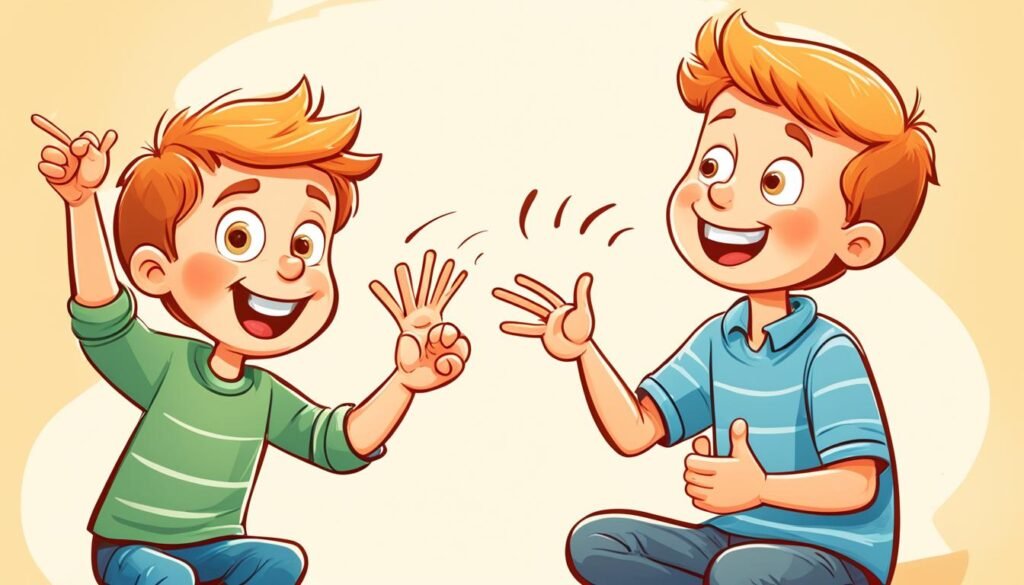
In the book, readers meet Otto, an autistic, non-speaking crow, whose actions reveal his emotional landscape. Whether he’s spinning a yellow pipe-cleaner or snuggling beneath a mound of stuffed animals, Otto’s behavior is a form of expression that’s both profound and deeply personal. His sister Piper serves as a guide for readers, teaching the value of understanding and the many facets of communication that move beyond words.
This poignant depiction is not just a story; it’s a compelling resource layered with teaching moments that underscore the importance of patience and empathy. It turns a lens on the silent but expressively rich mode of communication utilized by some autistic children, making it a vital addition to the oeuvre of autism resources for kids.
- Portrays non-verbal communication as a valid and significant form of expression
- Helps children recognize and respect the varied communication needs of autistic individuals
- Teaches readers that understanding goes beyond what is spoken
- Encourages empathy in children towards those who communicate differently
The power of “My Brother Otto” lies not just in its delightful storytelling, but in its ability to open young minds to the rich world of non-verbal exchanges. As much as it is an exploration of autism, it is a celebration of the diversity of language and the understanding that everyone has a voice, even if it isn’t heard out loud.
| Feature | Details |
|---|---|
| Character | Otto the Crow |
| Mode of Communication | Non-verbal actions (e.g., spinning items, cuddling) |
| Themes | Neurodiversity, empathy, communication |
| Audience | Children 3-6 years, educators, parents |
| Role of Piper | Guiding readers to understanding Otto |
Best Autism Books for Children: Highlighting Unique Perspectives
As we enter Autism Awareness Month, the literary world opens its arms to works that foster a deeper understanding of the condition, illuminating the myriad of experiences that children on the autism spectrum encounter. The best autism books for children are not just stories but windows into the unique minds that view the world through a different lens, facilitating empathy and connection among all readers.
The biographical genre has proven to be a powerful medium in this respect. Books like The Girl Who Thought In Pictures and The Reason I Jump draw the reader into real-world experiences of autistic individuals, provoking thought and deepening comprehension. These are not tales of imagination, but real-life narratives that resonate with authenticity and provide a platform for voices that are seldom heard.
Biographical Reads: Understanding Diverse Minds
Biographical stories function as a mirror reflecting the diverse realities of individuals with autism, offering youngsters a direct pathway to understanding neurodiversity. Julia Finley Mosca’s The Girl Who Thought In Pictures paints an intimate portrait of Temple Grandin’s perspective and ingenuity, highlighting her achievements and unique qualities. Similarly, the personal account in The Reason I Jump, translated by Ka Yoshida and David Mitchell, conveys the inner voice of Naoki Higashida, providing unrivaled insights into the thought processes of an autistic mind.
These authentic children’s books about autism enable readers to witness the world through an autistic lens, cultivating a sense of connectedness and compassion. They are essential additions to any list of best autism books for children, and their use during Autism Awareness Month can spark meaningful conversations and inspire greater empathy and inclusion.
Fictional Accounts for Empathy and Connection
While biographies provide a direct gaze into real experiences, fictional accounts offer another avenue for engaging young readers. Books like The Categorical Universe of Candice Phee and A Boy Called Bat deliver narratives that, though fictional, are grounded in the lived experiences of autistic individuals. These stories, marked by their vivid characters and engaging plotlines, are top books for kids with autism because they build a bridge of understanding and generate empathy among their non-autistic peers.
The power of storytelling—harnessing the capacity for narrative to enlighten and educate about autism—is exemplified in these fictional works. Through them, children are invited to journey alongside characters who may process the world differently, fostering an intrinsic value for empathy and the recognition of our shared humanity.
Each book, whether it be biographical or fictional, serves as a powerful resource to challenge and reshape perceptions, marking its place among the recommended autism books for kids. As children turn each page, they uncover a new perspective and, hopefully, emerge with a more inclusive worldview.
The Importance of Autism Resources for Kids
With the rise in diagnosis and awareness of autism spectrum disorders (ASDs), there is an ever-growing need for autism resources for kids. These resources, especially in the form of books, play an essential role in the lives of children with autism, helping them to make sense of their experiences and navigate the complexities of their daily routines. Selecting the right educational books for kids with autism can provide invaluable guidance and support, offering strategies that may help alleviate the challenges faced by these children.
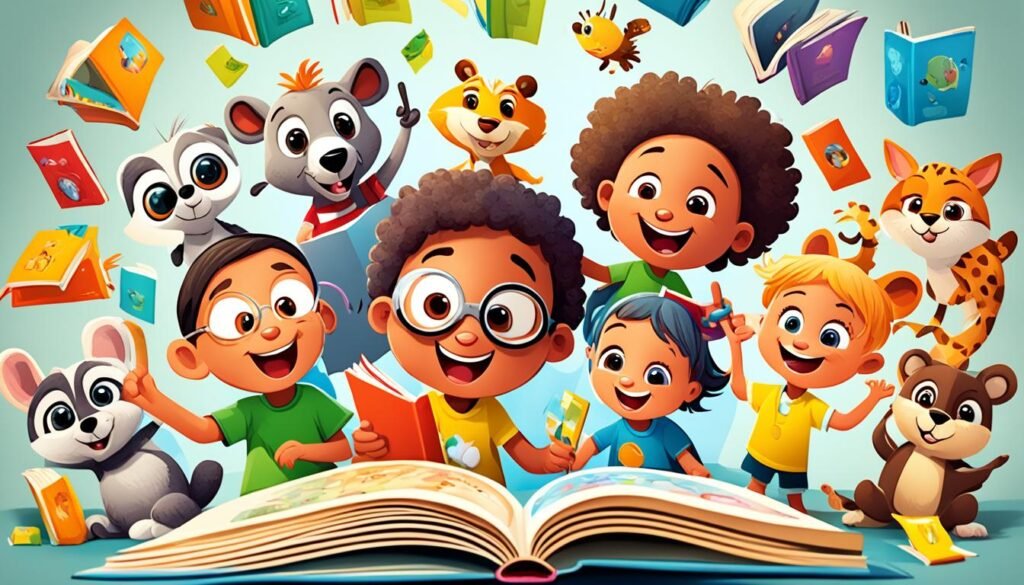
Books to Help Children with Autism Navigate Daily Life
Books tailored specifically to address daily life challenges can serve as a lifeline for children on the autism spectrum. The recommended books on autism for kids include narratives that resonate with their experiences and demonstrate supportive behaviors to manage sensory sensitivities and other aspects that come with the territory. A prime example is “Too Sticky! Sensory Issues With Autism,” which dives into the day-to-day struggles pertaining to tactile discomfort and how this affects a child’s interaction with the environment.
| Book Title | Focus Area | How It Helps |
|---|---|---|
| Too Sticky! Sensory Issues With Autism | Sensory Sensitivity | Provides insights and coping strategies for children with sensory processing challenges |
| Socially Curious and Curiously Social | Social Skills | Teaches nuanced social interactions through relatable stories and examples |
| The Survival Guide for Kids with Autism Spectrum Disorders | General Coping Strategies | Offers a wide range of advice for common issues children with ASD might face |
Utilizing Storytelling to Equip Kids with Coping Tools
Stories are more than just entertainment; they are a powerful vehicle for teaching and learning. Autism books for kids often include storytelling elements that furnish readers with coping tools. These books act as a form of indirect guidance, where children can see characters like themselves overcoming obstacles, which in turn, provides them with strategies that they can adapt into their own lives. The impact of this storytelling approach reaches beyond the child, serving as a resource for parents, educators, and peers to better understand the world of someone with autism.
- Stories model effective coping mechanisms in relatable scenarios
- Character-driven plots help readers connect on an emotional level, enhancing empathy
- Provides a non-intimidating environment for children to see problem-solving in action
Autism Awareness Through the Eyes of Protagonists in Kids’ Books
In the realm of children’s literature, the rise of children’s books about autism has been instrumental in fostering awareness and understanding among young readers. These books often emerge as the best autism books for children, crafted with care to depict the nuanced experiences of protagonists on the autism spectrum. By walking in the shoes of these characters, children gain a personal insight into the everyday lives, challenges, and joys that come with being autistic.
What distinguishes these narratives as significant autism resources for kids is their dynamic way of bridging gaps in understanding. For instance, Cindy views the world through patterns and finds solace in numbers, while Alex explores his love for trains to connect with others. These protagonists shed light on the inner workings of autism in a relatable, compassionate manner, allowing neurotypical peers to grasp the essence of these experiences in a heartfelt way.
As we look to a future where all children can flourish with acceptance and empathy, it is these protagonists who lead the vanguard, guiding readers toward a more inclusive world. The resonance of their stories marks an important milestone in literature, illuminating the spectrum of autism through characters that embody resilience, creativity, and the beauty of diverse minds.
FAQ
What is the significance of children’s books about autism?
Children’s books about autism play a critical role in educating both neurotypical and neurodiverse kids about the spectrum of autism experiences. These books help to normalize autism, foster acceptance and inclusion, and provide autistic children with relatable characters and stories. They serve as an entry point to discussions about neurodiversity, understanding, and empathy towards individuals with autism.
How do books help in fostering acceptance and inclusion of autistic individuals?
Books that accurately represent the autistic experience can break down barriers by presenting relatable narratives that challenge stereotypes and misconceptions. They give readers a deeper understanding of autism, encouraging them to appreciate the unique perspectives and qualities of autistic individuals, which paves the way for acceptance and inclusion within society and classrooms.
Why are accurate portrayals in autism-related kids’ books important?
Accurate portrayals in kids’ books are important because they counteract the harmful stereotypes often seen in mainstream media. They provide a more nuanced understanding of autism that can educate and enlighten readers, advocating for an authentic representation of the autistic community and promoting greater empathy and understanding.
How can picture books on autism benefit young readers?
Picture books on autism are beneficial as they combine visual narratives with engaging stories, making it easier for young readers to grasp complex emotions and situations related to autism. They help explain sensory issues, non-verbal communication, and other aspects of autism in an accessible manner, supporting the development of empathy in young children.
What types of stories are included in a curated collection of autism books for kids?
A curated collection includes a broad spectrum of stories, such as biographical narratives based on real-life experiences of individuals with autism and fictional tales with neurodiverse characters. Such diversity ensures that readers can find relatable content and gain a comprehensive view of the autism spectrum, through varied and inclusive stories.
Why are books by authors on the autism spectrum especially meaningful for kids?
Books by authors on the autism spectrum offer genuine insight from those who have firsthand experience with the condition. This authentic perspective can validate the feelings of autistic children while providing neurotypical readers with a more accurate and impactful understanding of autism, enriching their learning and fostering a connection with autistic peers.
Are there specific autism books for kids recommended for classroom use?
Yes, there are specific books, such as “Anything But Typical” and “Rules,” that are recommended for classroom use. These books provide narratives that help neurotypical students understand and empathize with autistic classmates, which can bridge gaps in knowledge and promote an inclusive environment within educational settings.
How do “My Brother Otto” and similar books address non-verbal communication in autism?
“My Brother Otto” and similar books address non-verbal communication by illustrating how individuals with autism might express themselves through actions rather than words. These stories provide insight into alternative forms of communication used by non-speaking or minimally speaking autistic individuals, helping readers to acknowledge and respect diverse communication needs.
What are the best autism books for children that highlight unique perspectives?
The best autism books for children highlight unique perspectives by offering insights into the diverse ways in which individuals with autism perceive and interact with the world. These include biographical reads like “The Girl Who Thought In Pictures,” and fictional stories such as “The Categorical Universe of Candice Phee,” which allow readers to experience the world through the eyes of neurodiverse protagonists.
How do educational books for kids with autism help navigate daily life?
Educational books for kids with autism offer strategies and tools to handle everyday situations and challenges, such as managing sensory issues or understanding social cues. These books often include tips and examples on how to deal with various scenarios, empowering autistic children to lead more comfortable and fulfilling daily lives.
What role does storytelling play in equipping kids with autism with coping tools?
Storytelling plays a significant role in introducing coping strategies for kids with autism. Through engaging narratives and relatable characters, children can learn how to navigate social interactions, cope with sensory sensitivities, and embrace their unique outlooks. Storytelling is a gentle and effective way to present coping mechanisms in a context that is both educational and enjoyable.
Can reading books about autism enhance awareness among children?
Reading books about autism can significantly enhance awareness among children by presenting the experiences of autistic protagonists in relatable and engaging ways. These books invite readers to step into the shoes of individuals with autism, fostering a deeper understanding of their thoughts, feelings, and the world as they experience it, thus leading to greater awareness and empathy.
